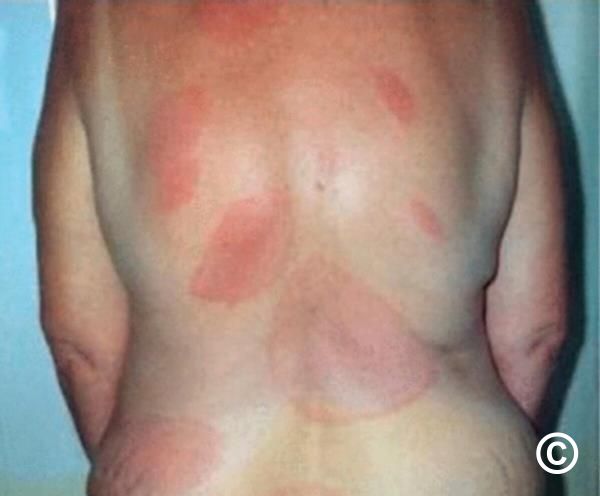The Duty of Lymecare Alliance beforehand Lyme Condition Study
The Duty of Lymecare Alliance beforehand Lyme Condition Study
Blog Article
Lyme Condition Understanding-- Know the Symptoms and Stay Protected
Lyme condition continues to be a considerable public health and wellness worry, especially in areas where ticks are widespread. What particular steps can people take to secure themselves against this often-overlooked condition, and just how can communities improve their general action?
Understanding Lyme Disease
Lyme illness, a prevalent tick-borne illness, is triggered by the bacterium Borrelia burgdorferi. This disease is mainly transferred to people with the bite of infected black-legged ticks, frequently recognized as deer ticks. The geographical distribution of Lyme illness is mainly focused in the northeastern, north-central, and Pacific seaside areas of the USA, although cases have been reported in other areas as well.
The life cycle of the tick plays an important role in the transmission characteristics of Lyme illness. Human exposure to ticks is specifically raised in wooded or grassy areas, particularly during warmer months when ticks are most energetic.
Understanding the ecology of Lyme disease is essential for effective prevention approaches. Awareness of tick environments and habits can substantially decrease the possibility of bites. Public education and learning on proper tick elimination methods and the value of individual protective steps can aid alleviate the risk of having this complex and possibly devastating ailment.
Usual Signs And Symptoms to Acknowledge
Acknowledging the typical symptoms of Lyme illness is crucial for very early diagnosis and treatment. The first manifestation usually consists of a characteristic skin breakout known as erythema migrans, which looks like a red circular spot with a central clearing up, appearing like a "bull's- eye." This rash typically creates within 3 to 30 days after a tick bite and can vary in size.
Along with the breakout, individuals might experience flu-like signs, including high temperature, cools, fatigue, muscle mass pains, and joint discomfort. These symptoms can be misleading, as they are typical to many various other ailments. If left untreated, Lyme illness can advance to more severe symptoms, consisting of neurological concerns such as meningitis, face palsy, or cognitive problems.
Prompt treatment can stop the progression of the illness and lower the risk of long-term difficulties. Vigilance is key in determining and dealing with the signs and symptoms linked with Lyme illness.

Threat Aspects and Transmission
Comprehending the risk aspects and modes of transmission connected with Lyme disease is crucial for efficient avoidance. Lyme illness is primarily sent through the bite of contaminated black-legged ticks, commonly understood as deer ticks. These ticks grow in woody, grassy, and brushy areas, making outside tasks in such atmospheres a considerable threat variable for transmission.
Individuals who involve in outside leisure activities such as horticulture, hiking, or camping are a lot more likely to encounter these ticks. In addition, staying in or checking out areas where Lyme illness is native to the island, including parts of the northeastern, north-central, and Pacific coastal regions of the United States, enhances exposure threat. Particular line of work, such as landscaping, forestry, and farming, likewise present enhanced risks because of long term exterior exposure.
Moreover, the life cycle of the tick, which calls for specific environmental conditions, impacts transmission dynamics. Factors such as climate change, which influences tick environments and populations, Related Site can further worsen danger. Comprehending these aspects is crucial for people to identify their prospective exposure and take necessary precautions to reduce their risk of contracting Lyme disease.
Effective Avoidance Approaches
Consistently executing reliable prevention approaches is important for reducing the risk of Lyme illness. The first line of protection is to avoid areas recognized for high tick populations, especially wooded and verdant atmospheres.

Enlightening family members and close friends concerning these prevention strategies promotes area awareness and alertness, additional lowering the possibility of Lyme disease transmission. By taking on these actions, individuals can efficiently protect themselves from the threats linked with Lyme condition.
Value of Very Early Discovery
Early detection of Lyme illness dramatically affects treatment end results and can protect against the development of the ailment. The very early stages of Lyme illness are often marked by flu-like signs, consisting of high temperature, tiredness, and the particular erythema migrans breakout.
On the other hand, delayed diagnosis can lead to more extreme symptoms of the disease, including neurological and heart problems, which can be much more challenging to treat and may lead to extended wellness issues. Late-stage Lyme condition may call for prolonged antibiotic treatment and can cause persistent have a peek at this website symptoms, dramatically affecting lifestyle.
Overall, boosting recognition around the very early indications of Lyme condition is important for reliable management and prevention of even more severe health and wellness consequences. Early treatment is not just advantageous for the likewise critical however individual in decreasing the general problem of Lyme disease in the neighborhood.
Conclusion
In summary, boosting understanding of Lyme Disease is crucial for advertising early discovery and reliable prevention. Eventually, a collective effort to remain notified and vigilant versus Lyme Disease can enhance area health and lessen the impact of this possibly serious illness.
Lyme disease continues to be a substantial public health concern, specifically in areas why not try these out where ticks are prevalent.The life cycle of the tick plays an essential duty in the transmission dynamics of Lyme disease.Understanding the danger variables and modes of transmission associated with Lyme condition is important for effective avoidance. Lyme disease is mostly sent via the bite of infected black-legged ticks, generally recognized as deer ticks. Understanding these variables is essential for individuals to recognize their possible exposure and take essential safety measures to decrease their danger of having Lyme condition.
Report this page